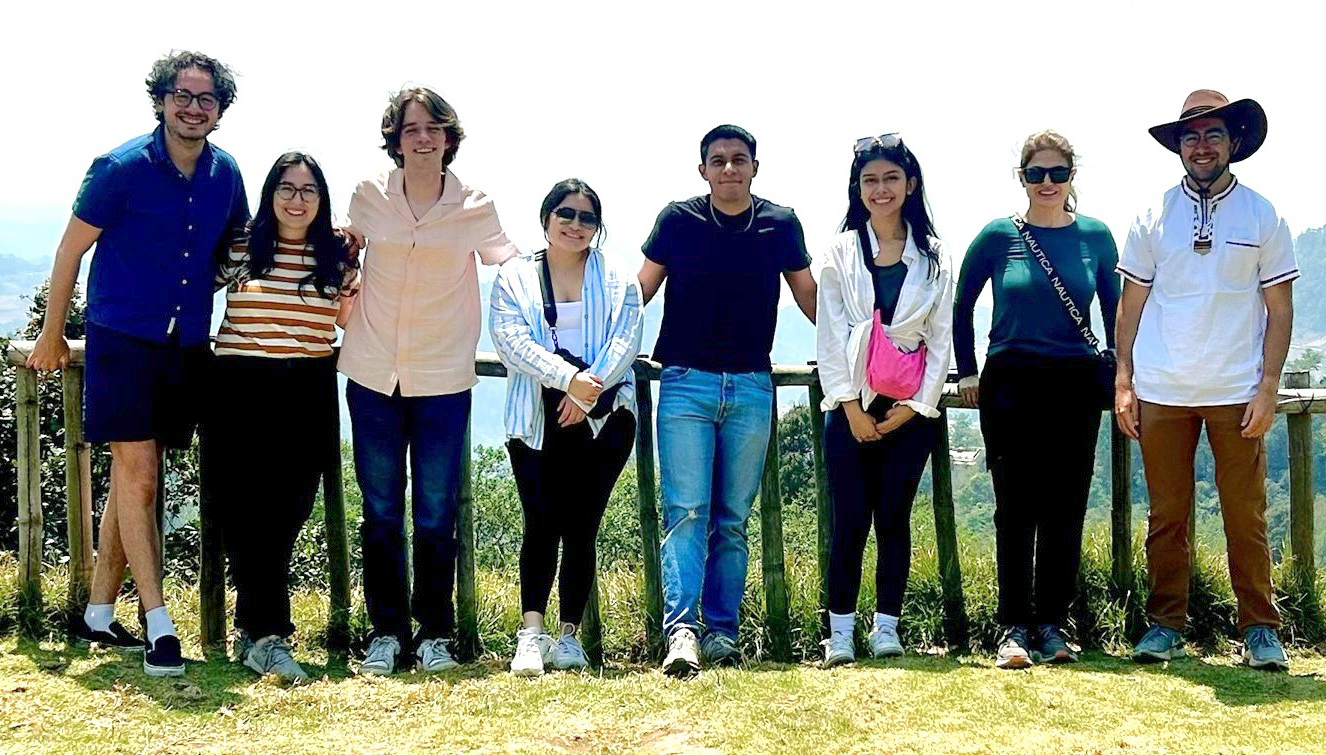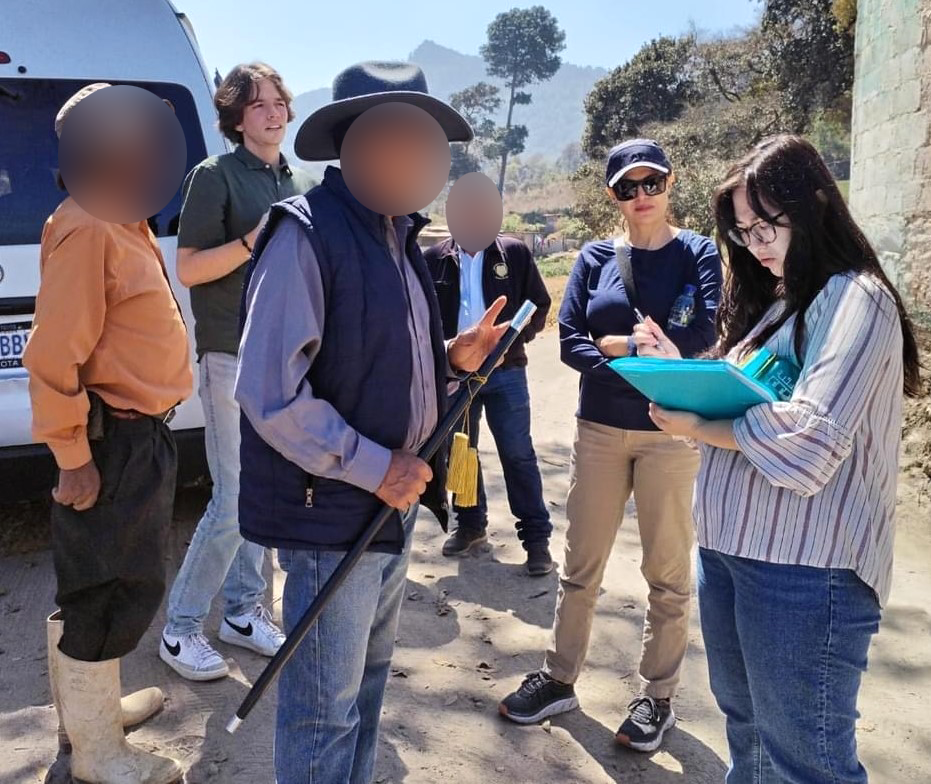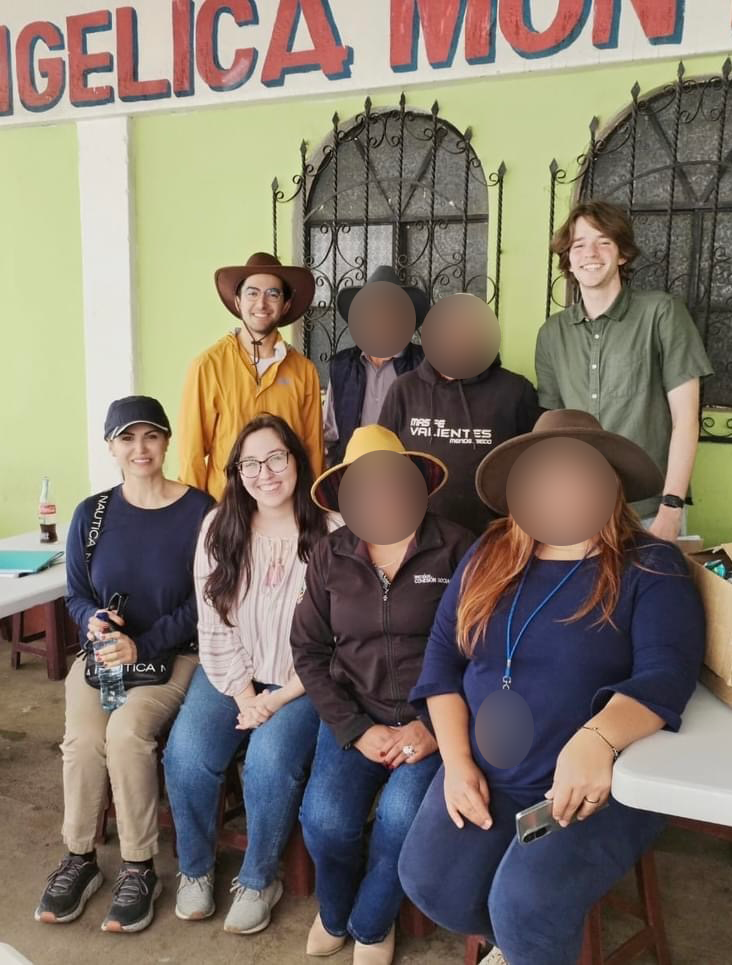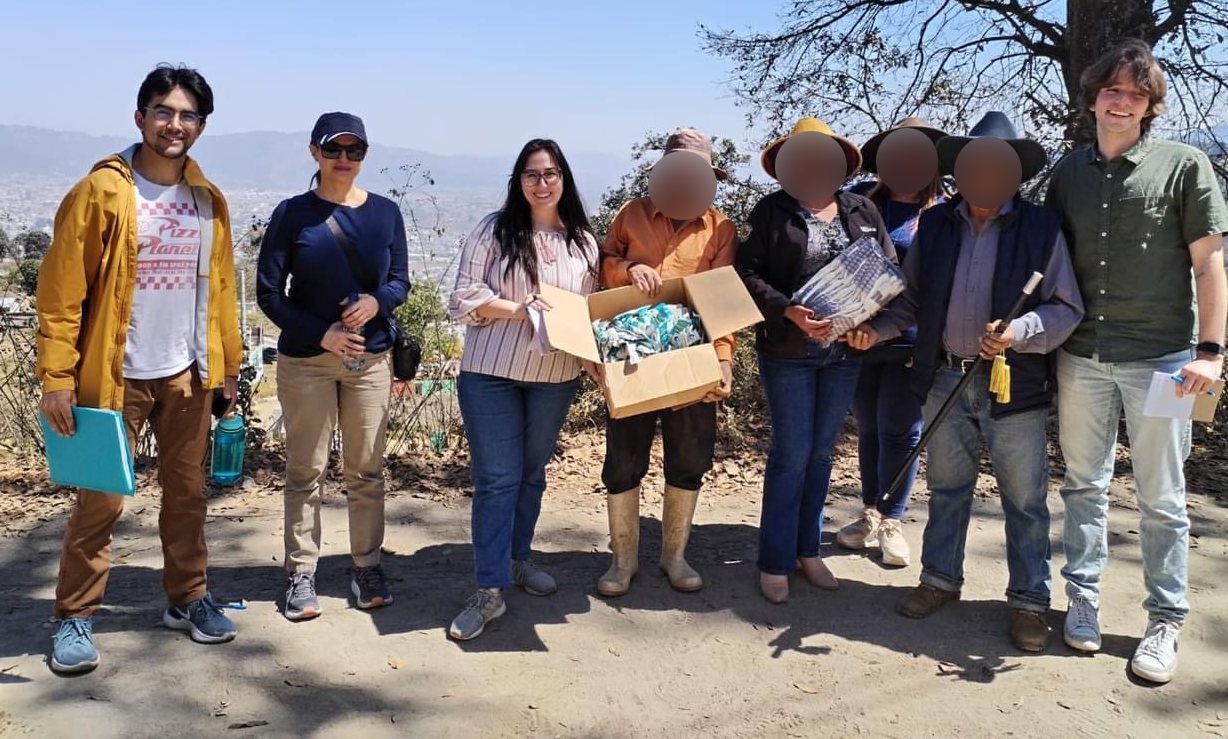Hamie led capstone team to assess climate-induced migration
Guatemala faces the cascading effects of climate change that is exerting pressure on its populations, compelling its people to migrate in search of economic stability as their traditional ways of living become untenable. Many individuals from Guatemala migrate in search of better job opportunities, often driven by economic necessity rather than choice. In 2020, Guatemala was among the top 25 countries grappling with disaster displacement globally. Climate-related events such as hurricanes, floods, droughts, earthquakes, and volcanic eruptions are common Guatemalan threats that not only cause immediate damage to infrastructure and homes but also lead to substantial economic losses, which drives migration as people seek more stable environments.

Dr. Silva Hamie, Instructional Associate Professor in the Department of International Affairs and Assistant Director for Energy Policy at the Texas A&M Energy Institute, and seven Master’s students were supported by the Texas A&M Bush School of Government and Public Service to visit Guatemala for a capstone project titled The Role of NGOs and Governments on Climate-Induced Migration in Guatemala. Dr. Hamie’s team worked with the International Organization of Migration (IOM), a non-governmental organization (NGO) with a 25-year history of humanitarian assistance, offering programs that strengthen the capacities and Guatemalan government and municipalities to better equip vulnerable communities with migration-related responses.
The team visited the Departments of San Marcos and Quetzaltenango, and Guatemala City, all vulnerable Guatemalan communities with high rates of climate-related displacement. Master’s students Travis Andrews, Domenica Bailon, Zach Brittain Ochoa, Xochitl Fuentes, Matthew Mascorro, Sergio-Alejandro Porres, and Alexis Rangel worked with IOM to coordinate 19 total interviews with indigenous community leaders, government officials, and NGOs. These interviews focused on determining community approaches for disaster risk reduction to assist in adaptation strategies for sudden and slow-onset disasters.

These activities lay the groundwork for eventual contingency plans for displacement prevention with respect to agriculture, economics, and migration. If supported by national and municipal policies, these plans could play a significant role in reducing climate-related migration in some of Guatemala’s most susceptible regions through remote entrepreneurship and financial literacy programs, better early warning systems, infrastructure development, enhanced economic security, and community-based disaster preparedness and adaptation programs.
Department of San Marcos
Agriculture plays a significant role in the livelihoods of those living in San Marcos. It is often the only source of income for families who have no other access to financial resources. In this region, the Ministry of Agriculture provides seeds for vegetables, but many do not grow in the region due to high winds and poor soil conditions. Additionally, due to the seasonality of crops, fruits can be harvested in the summer, but farmers must migrate south to harvest coffee in the fall. Although the government has attempted to diversify agricultural produce in this region, the initiatives have not been successful.
Due to the lack of sustainable farming in San Marcos, many young people opt to partake in work programs that allow them to move north and find work either seasonally or permanently. Those who migrate out of the community often do not send remittances back to the community, further impacting economic stability.
When natural disasters such as frequent earthquakes and landslides further exacerbate tenuous farming conditions, infrastructure is damaged or destroyed eliminating the only routes into and out of these remote villages. The lack of efficiencies in government support to rebuild infrastructure, especially on the outskirts of municipalities, leave villagers to repair infrastructure damage themselves. This takes time and resources away from what is required for sustainable farming.

Department of Quetzaltenango
In the Quetzaltenango region, agriculture is the largest source of income during the rainy season. During the dry season, lack of water access eliminates agriculture as a means of economic security. Therefore, it is common for the men to pay “coyotes” who charge a fee to help them migrate across international borders in search of employment. To pay for these services, the men often get a loan by mortgaging their homes. When ample remittances are not sent back to their Guatemalan families, women, who are often unemployed, are left to pay the debt or risk losing their homes. Therefore, NGOs have stepped in to provide resources for women to become more self-sufficient by providing assets such as stoves and thread that allow them to sell baked goods and textiles in markets.
Additionally, NGOs have established entrepreneurial programs to increase competitiveness of villagers in vocational job markets beyond the volatile agriculture sector. Locals are provided courses in business management, literacy, computer programming, and soft skills such as resume building and interviewing skills. This incentivizes villagers to stay in the region and work in professions that expand the economic diversity and viability of the villages beyond agriculture.
Water scarcity issues further elevate the threat of wildfires in the Quetzaltenango region. With no national emergency plan and the frequent turnover of local government officials, village leaders have limited knowledge of the few government resources that are available. Moreover, they do not know how to access the sparse resources. To mitigate fire threats, villagers who have limited financial means to support a fire department, instead dig and maintain ditches and clear brush and other flammable materials to contain wildfires.

Water scarcity issues further elevate the threat of wildfires in the Quetzaltenango region. With no national emergency plan and the frequent turnover of local government officials, village leaders have limited knowledge of the few government resources that are available. Moreover, they do not know how to access the sparse resources. To mitigate fire threats, villagers who have limited financial means to support a fire department, instead dig and maintain ditches and clear brush and other flammable materials to contain wildfires.
“There is enormous inequality and inequity in access to resources, and more and more gaps are opening between men and women, as well as among indigenous peoples,” stated one NGO member when asked about recommendations to obtain better government support. “Further success lies in how the new government builds up these institutions.”
Guatemala City
Guatemala City has similar challenges as the other regions, but they are also impacted by hurricanes, and volcanoes. The city is creating disaster risk reduction mechanisms in response to these events, but the chief limitation in promoting disaster prevention is that “Guatemala has a culture that prioritizes response to disasters as opposed to preparation for disasters,” according to a local government agent who is responsible for ensuring that institutions are following their emergency plans. He continued by stating that the various Guatemalan government agencies who are responsible for disaster management are uncoordinated and do not share data between agencies. Therefore, there is a need for localized response in Guatemala for faster disaster relief.

STUDY CONCLUSIONS
Although climate change and natural disasters impact many Guatemalan sectors, they adversely affect agriculture, economics, and migration. Rainfall patterns via inconsistent wet and dry seasons inhibit farmers in local and indigenous communities from sustainable and profitable yields. Consequently, populations that rely on agriculture as a source of income tend to be the most likely to migrate because they have lost livelihoods and food security.
The study found that rural populations are most at risk due to a heavy reliance on small-scale agriculture and limited access to economic opportunities, which propagates poverty. Further, rural indigenous communities are outside the scope and scale of government capacities; therefore, they lack resource allocation from the government to sustain their way of living in a changing climate.
Consequently, these communities adopt localized coping mechanisms like modified agricultural practices and local emergency response plans. NGOs attempt to intervene with targeted programs to help mitigate specific local challenges.
The study found a conclusive linkage between natural disasters and a decision to migrate. The Guatemalan government requires a substantial enhancement of its organizational capacity, scope, and scale of rural and indigenous community support to enable disaster preparedness. NGOs can further support community resilience through outreach and educational training.
RECOMMENDATIONS
With this knowledge, Dr. Hamie and her students offer six recommendations for more equitable mitigating strategies:
- Recommendation 1: Adoption of climate-resilient agricultural practices
- Recommendation 2: Improve localization mechanisms through project ownership and inclusion of local communities in decision-making
- Recommendation 3: Increase collaboration and partnerships between NGOs, governmental agencies, and the local population
- Recommendation 4: Enhance capacity-building, technical training, and trade occupation education programs within local communities
- Recommendation 5: Advocate for policy and legislative changes
- Recommendation 6: Better data reporting and sharing for early warning systems
For additional information, contact Dr. Silva Hamie, Instructional Associate Professor in the Department of International Affairs and Assistant Director for Energy Policy at the Texas A&M Energy Institute, at silva.hamie@tamu.edu or (979) 458-8034.

